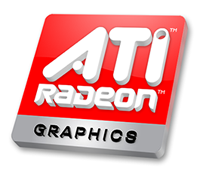Introduction

AMD have taken quite a beating on pretty much all fronts since their acquisition of ATI. Much of the financial pain seems to come from the CPU business, but the acquisition is what depleted AMD's cash reserves and put them in an undesirable credit position. And I don't know about you, but a lot of the handbags, biting and pulling of hair has seemingly been aimed at the part of the business we now know as the AMD Graphics Products Group.
Hell, we've aimed plenty of it in their direction ourselves, so we know it's true. It's a historical thing that's been running before that though, because the former ATI hasn't had the best of times in the last few years, even before AMD thought about the rings and the wedding dress. That's true especially where it concerns the design of new architectures and the manufacture of the resulting implementations so they can be sold.
Sometimes it's been their fault, sometimes not, and you can't ignore that those nots have cost them quarters out of the market when they should have been selling certain things, and millions of dollars in lost revenue has been the result. Ouch? Yeah, ouch. But, nobody ever gets it that perfect in the graphics market of course in terms of execution, it's just the former ATI have tripped and stumbled over the line more times that anyone probably cares to remember.
So what's the answer? Is there even one? Yeah, of course there is, and it doesn't take much thinking to imagine that one such part of the bigger saving grace, to get the company feeling like it can still kick some goddamn ass, is a box-fresh product devoid of niggles that gets it right, delivers exactly what it set out to, and makes AMD some money while not relieving you of too much of your own.
Those are some loaded statements if you want to delve in to the details, since they concern huge swathes of what it takes to do anything in the graphics IC business, especially one whose core focus is serving a market of consumers hundreds of millions of people strong. Those loaded statements ring true, though.
The way things sit, if you're NVIDIA or AMD, you're currently looking to open the taps and make huge piles of money by selling as many chips as you can make into the mainstream. Those chips need to offer price/performance ratios unheard of thus far, but at money-making levels they can enjoy by virtue of (mostly) the size of the damn things. Smaller chips equals more dice per wafer start, equals more money in their pockets and less in TSMC's.
So what AMD set out to design in RV670, today's newest GPU to market, was something -- as distilled as we can make it sound -- that delivered R600 levels of performance in as small a chip as possible. Execute well on that and everything else falls in to place, by virtue of market forces and production techniques. That cascade effect, where one thing leads on to another, is what we'll attempt to here where it concerns the first two SKUs out of the door based on the new GPU.
Let's say hello to RV670 first, then Radeon HD 3870 and Radeon HD 3850. This isn't a full analysis by the way, rather just a discussion of the bigger points on launch. We've not got a board or four yet, sadly, but it's soon to arrive.
